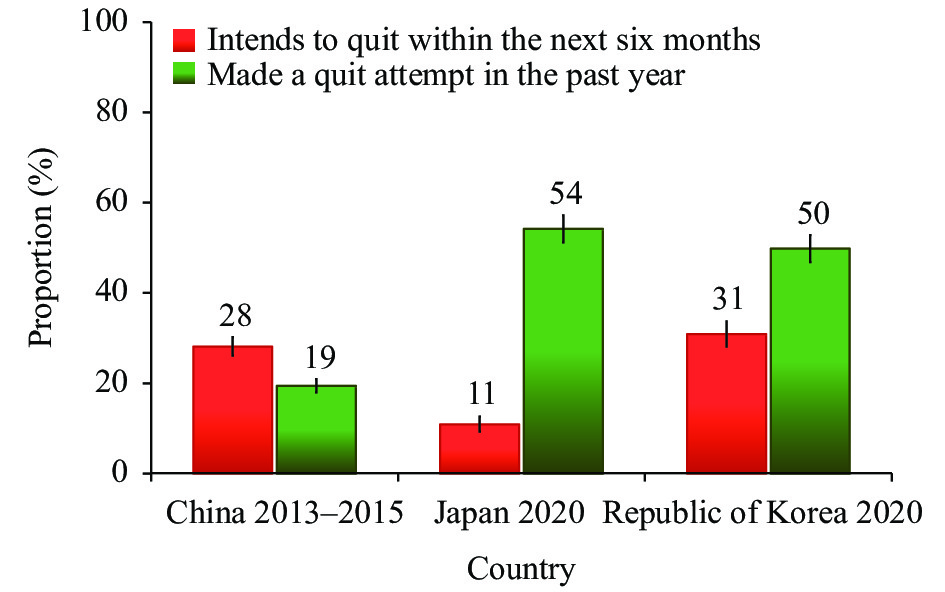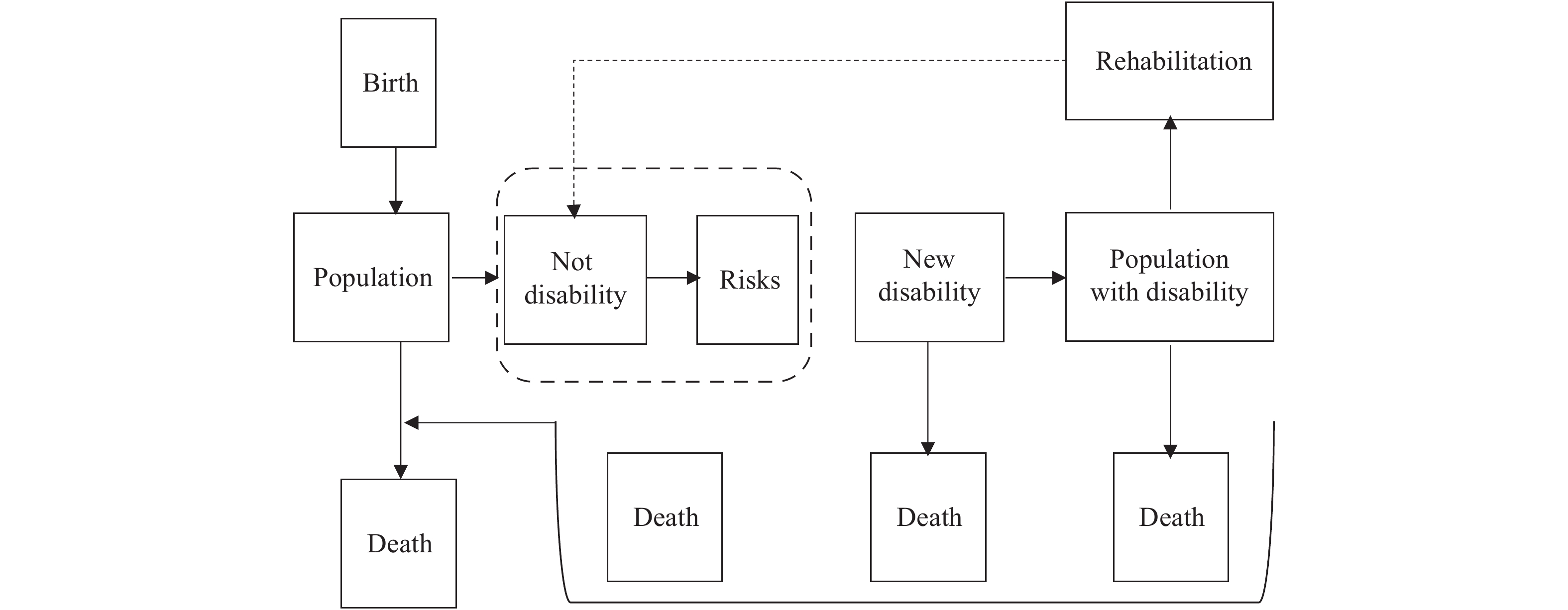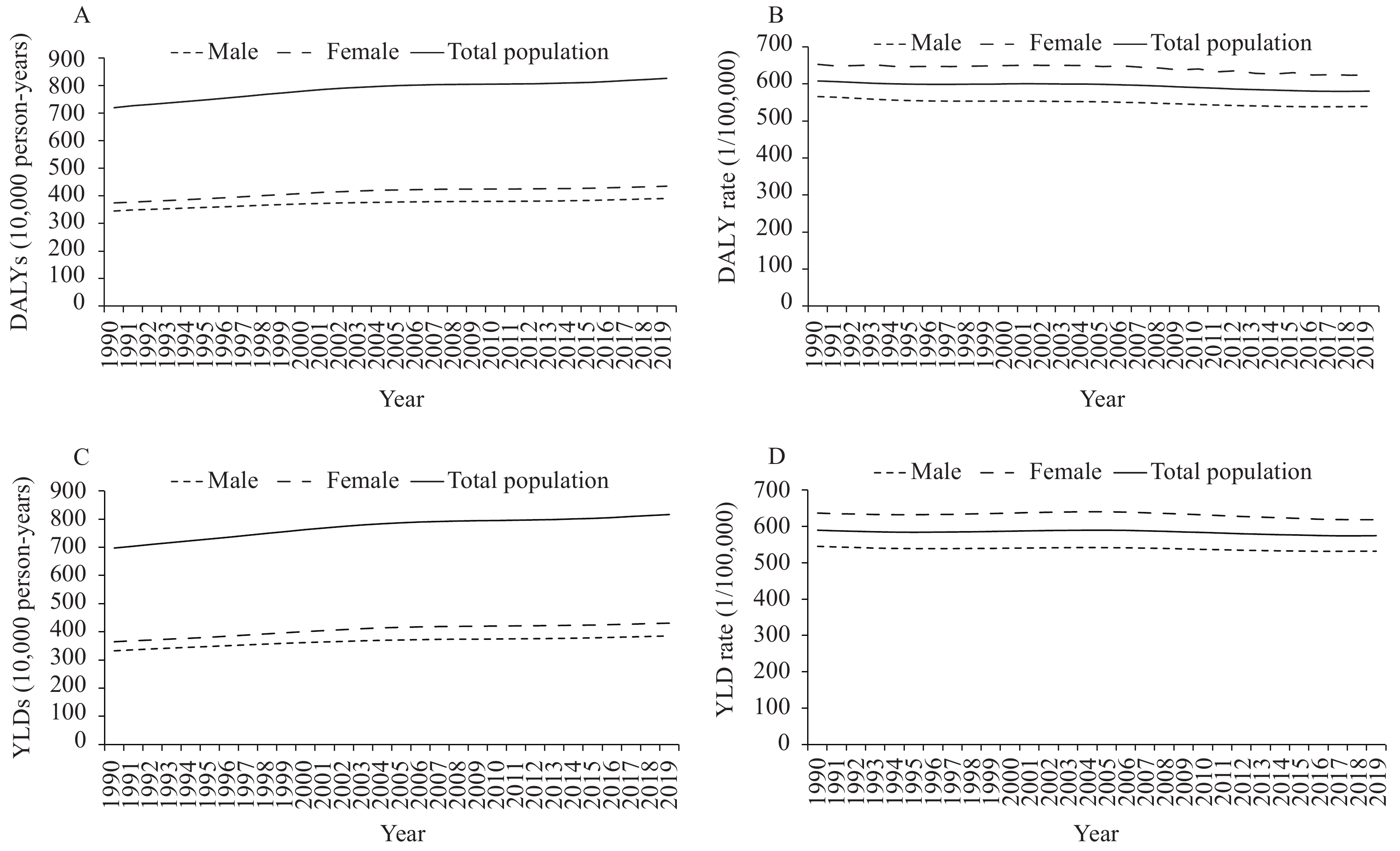2021 Vol. 3, No. 22
Tobacco smoking is the number one preventable cause of disease and death in China as it is globally. Indeed, the toll of smoking in China is much greater than its status as the world’s most populous country. There is a persistent and continuing need for China to implement the measures specified in the global tobacco control treaty, the World Health Organization (WHO) Framework Convention on Tobacco Control (FCTC), which China ratified in 2005. The theme for the 2021 WHO World No Tobacco Day focuses on the need to support smoking cessation. This article presents findings from the International Tobacco Control (ITC) Policy Evaluation Project cohort surveys in China, in comparison to ITC cohort surveys in two neighboring countries: Japan and the Republic of Korea. These findings demonstrate that smokers in China very much want to quit, but these intentions are not being translated into quit attempts, relative to smokers in Japan and the Republic of Korea. Additionally, about 80% of Chinese smokers want the Chinese government to do more to control smoking. These findings reaffirm the need for China to implement strong, evidence-based measures to reduce smoking. The objective of Healthy China 2030 to reduce deaths from non-communicable diseases by 30% can be achieved by reducing smoking prevalence from its current 26.6% to 20%, and this reduction can be achieved through strong implementation of FCTC measures.
What is already known about this topic?
A previous study found that the size of population with disability was 52.7 million and 84.6 million in 1987 and 2006, with the weighted disability rate of 4.9% and 6.5%, respectively.
What is added by this report?
This study restored the prevalence of disability and its change trajectory in China during 110 years from 1896 to 2006 across 3 centuries.
What are the implications for public health practice?
This study realized the innovation of cross-sectional data utilization methods and the expansion of the theory of morbidity transformation while making up for the lack of historical data.
What is already known about this topic?
Skin diseases are common, affect society and individuals, and have high incidences to relapse, which reduces the quality of life. In 2019, skin diseases were the seventh leading global causes of years lived with disability (YLDs).
What is added by this report?
All-age disability-adjusted life years (DALYs) and YLDs from skin diseases have been steadily increasing in China from 1990 through 2019, although with a decline in the standardized rate of years of life lost (YLLs). In 2019, dermatitis was the leading cause of YLLs among people over the age of 15 years, while viral skin diseases had the greatest burden among people under 15 years. Acne vulgaris increased significantly among people aged 15–49 years, and psoriasis increased among people over 50 years. The male∶female ratio of DALYs lost due to skin disease did not change between 1990 and 2019.
What are the implications for public health practice?
The lack of data on the total skin disease burden in China called for additional research. The Global Burden of Disease provided a reference for skin disease control and prevention in China.
What is already known about this topic?
As a major cause of maternal and neonatal mortality and morbidity, hypertensive disorders of pregnancy (HDP) are a global public health problem affecting maternal and children’s health.
What is added by this report?
The incidence of HDP was 6.40% among 277,632 pregnant women. With the progress of pregnancy, the proportion of pregnant women with high normal blood pressure (BP) and the incidence of HDP increased gradually. The incidence of HDP increased with pregnancy age, body mass index, and BP of pregnant women during first trimester.
What are the implications for public health practice?
To reduce the incidence of HDP effectively, we should pay more attention to older women who plan to become pregnant, measures should be taken to control BP and weight in pre-pregnancy.



 Subscribe for E-mail Alerts
Subscribe for E-mail Alerts CCDC Weekly RSS Feed
CCDC Weekly RSS Feed

